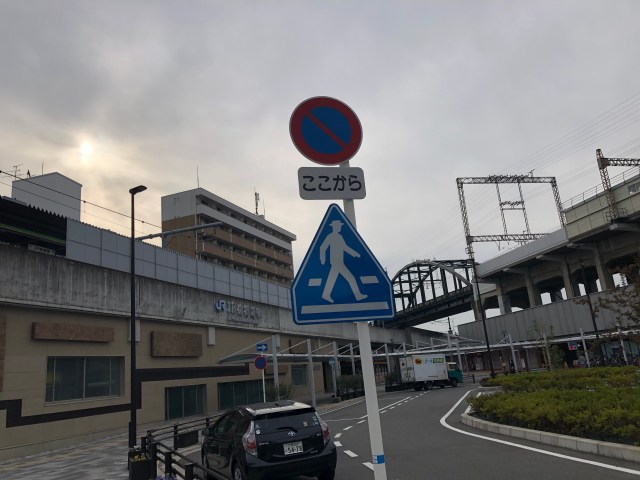
They say the hardest part of any task is getting started… We’ll see about that.
When the topic of hardest countries to get a driver’s license is brought up, Japan often comes up as one of them. Even inside the country it’s a notoriously difficult process, I remember telling one friend I was going to try to get a license without going to driving school, and she replied “Can you do it? I wonder…”
I was a little offended at first, but I later realized she was being kind, as everyone else answered: “It’s kind of impossible, you know?” This would also be followed by a story of a friend of a friend who had to retake the test several time even though they knew how to drive – and therein lies the problem.
This amazing difficulty always felt like more of an urban legend than documented fact and I could never really get a sense of exactly why it was so especially difficult. So to find out, I decided to try it out and see first-hand what gave this driving exam its reputation.
・Options, options…
For people like me who move to Japan from other countries there are three main options. One is to either get their home countries’ licenses translated or get an international permit. These are by far the easiest ways, but not without their own drawbacks. Translating a license requires a lot of paperwork with on the Japanese side and might not even be allowed depending on the country or state of origin. International permits are only good during the first year of residency and need to be gotten prior to entering Japan. Regardless, neither were an option for me since my original license had expired long ago.
The second way is to attend one of Japan’s many, many driving schools. However, they are usually extremely expensive, and you should expect to pay well over 200,000 yen ($1,700) to spend a lot of hours in lessons and on a practice course. On the plus side they really minimize the risk of failure and are recommended for those with no driving experience whatsoever.
This didn’t really appeal to me either though, since I don’t have that kind of time or money and don’t really want to spend either being taught things I already know as an experienced driver. So, I decided on the final option: going straight to the police and taking the required tests.
▼ Osaka Prefectural Police Headquarters Kadoma Driver’s License Test Site
This involves a four-test process: First, you must take a written exam, and if you pass that you can move on to a driving test. Passing this test will grant you a temporary license/learner’s permit which you must use to log in a required number of hours driving with a licensed person as practice. When that is done you must take another, longer written test and more complex driving test for the full license. Altogether it should take a few months and only cost around 10,000 yen ($88) if successful on the first attempt…which everyone says is impossible.
・Getting started
At this point I should point out that I’m doing all this through the Osaka Prefecture system, and in Japan driving licenses are issued by individual prefectures with slightly different procedures and standards. So, what I experience may not be the same as other parts of the country, but will hopefully give you a clearer idea of what to expect.
In order to take the first written test, I had to make a reservation online. Much to my surprise the entire rest of the year was booked solid except for one slot two days after. I must have really lucked out and caught a last-minute cancellation though, so be sure to make your reservation well in advance.
▼ The reservation system is actually rather convenient
You’ll also need to make sure you have all the necessary items before heading out. Much like in other countries, the department of motor vehicles here is also devoid of leniency and will send you straight home if you don’t have exactly what they want. In my case, I needed HB (#2) pencils, erasers, a pen, some form of ID, a 3.0 x 2.4 centimeter photo, money to cover the fees, glasses or contacts if you need them, and a juminhyo, which is a document you can obtain at your local city office that proves your current address.
▼ The money isn’t pictured here, but the written test for a regular car cost me about 3,000 yen ($26).
The reservations have a time window such as 8:45 to 9:30, but don’t mistake that for an invitation to waltz in at 9:29. I arrived at about 8:50 and barely made it into the test room on time. The police department was full of about three dozen counters, window, and tables, many of which with the same vague signs reading “reservation confirmation”, so you should expect to get lost.
There are also forms on-site that you’ll have to fill out. These can be tricky since they’re all in Japanese only and deal with a range of different situations such as getting a new license, re-taking a test for a suspended license, or changing information. Since it can be a bit of a confusing rush on the day of the test, it might be a wise idea to go to there in advance and check them out, so you can know exactly which one you’ll need when the time comes.
・English?
Once I was processed into the system, I was given a quickie eye-exam and then the option to take the written exam in either Japanese, Japanese with furigana (simpler text to help read kanji characters), English, Chinese, Vietnamese, or Portuguese. Not wanting to leave anything to chance, I choose English.
This option is usually not available in more rural prefectures, but even in Osaka English is limited to just the text on the exam paper. Everything is explained and handled only in Japanese, but that being said they had pretty good support staff who were checking that I understood everything that was going on, so even if your have only a moderate ability in Japanese, you can probably manage.
▼ The eye exam involves saying where the gaps in the circles are, but pointing in the correct direction with your hand is fine too. You also need to distinguish the colors of traffic signals, but remember that in Japanese green lights are usually called “blue” (“ao“)
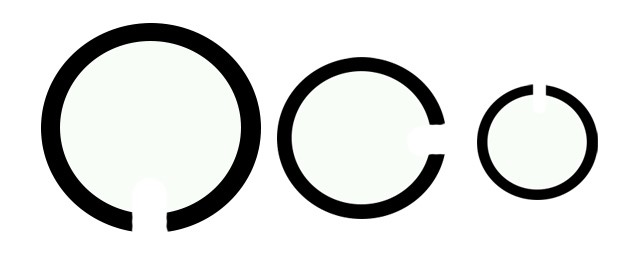
▼ This book from the Japan Automobile Federation is easily bought on Amazon and available in different languages. It’s very succinct and covers a lot of ground such as signs and road markings, but there were some questions on the test that touched on things I don’t remember reading in it, so be careful.
As for the rules of the road in Japan, they really aren’t so different from other countries. The signs might be a little different but the logic is more or less the same. In my case, the biggest difference from my home country is the widespread usage of side stripes here. Since a lot of roads don’t have sidewalks, a space is allotted for pedestrians and bicycles along the side of the asphalt.
This is demarcated by either a solid white line, a dotted line and solid line, or a double solid line. If it’s a solid line you can park your car inside the line as long as there’s a 0.75-meter (2.5-foot) clearance on the side of the road (i.e. to the left of your parked car) for pedestrians and cyclists to pass through. However, if the area inside the side stripe is less than 0.75 meters then you have to park alongside it instead of inside it.
▼ Although there is only a single stripe here, the space is too small, so you can’t park inside of it
If the side stripe has a double solid line or a dotted and solid line then you cannot cross over it with a regular passenger vehicle. This was a little surprising to learn since I see cars parked inside them on an almost hourly basis.
▼ You are not supposed to park on either side of this street at all
Since side stripes are so prevalent you’re pretty much guaranteed to get some questions about them. Also, since the license for a regular car also gives you the ability to ride mopeds, you should expect one or two questions about moped operation and safety as well.
Aside from that, if you’ve taken a written driving exam in your home country, you probably won’t find a huge amount of difference in a Japanese one. However, one unexpected challenge was that the English translation of the test was…sort of wonky. Some of the questions were really oddly worded and some words choices made me second guess if what they said was what they really meant.
I can’t reproduce the exact questions from the test, but there was one true-or-false question that went something like this:
“Starting your car after signal, and you can move out with blinkers, checking mirror, and so on.”
That “so on” wasn’t me paraphrasing either. The true-or-false question actually ended with “and so on!”
I was tempted to ask the staff for the original Japanese paper to check it, but in the end confidently felt I had backwards translated the question accurately enough to figure out what it was trying to say: “After starting your car, put on your turn signal and leave it on as you pull out, while also checking the mirrors and blind spots.”
In fairness, most of the English was perfectly fine, but when 90 percent was needed to pass, it was a handicap I could do without. So, if you’re confident enough in your Japanese reading ability, you may want to consider taking the test in Japanese, even if it isn’t your native tongue.
・Waiting is the hardest part
After I finished the test I was told to go to the main hall an hour later to see the results. On large monitors they display the seat numbers of those who passed and those who didn’t. Those who had passed all returned to the testing room, and those who failed had to go to a separate room.
Much to my relief I managed to score above 90 and returned to my test room. I wasn’t able to see the results in detail, such as my final score or which questions I got wrong. However, I was very surprised to see that only about half of the people who took the test returned to that room. There the administrator handed each of us a small booklet for the driving test procedure and a slip of paper with an assigned date and time to take it about a week later.
▼ The driving test will take place on a closed course in the same facility
And so, I passed the first of four stages in this “impossible journey” successfully, but it would surely get a lot harder from here on out. If you have any questions about the process of getting a driver’s license in Japan, let us know in the comments below and we’ll try to include it in future articles!
Photos ©SoraNews24
● Want to hear about SoraNews24’s latest articles as soon as they’re published? Follow us on Facebook and Twitter!


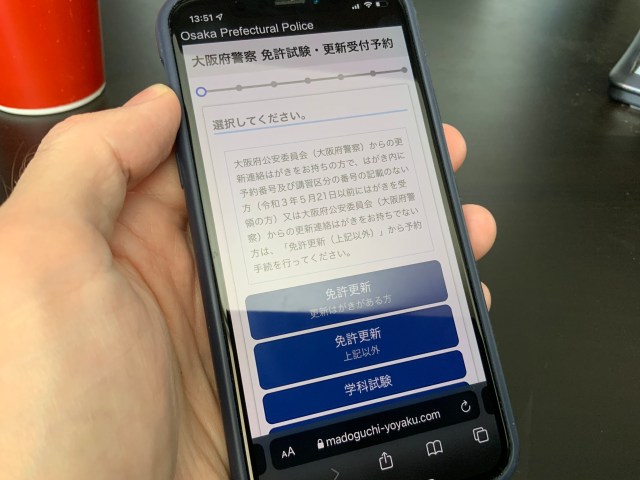
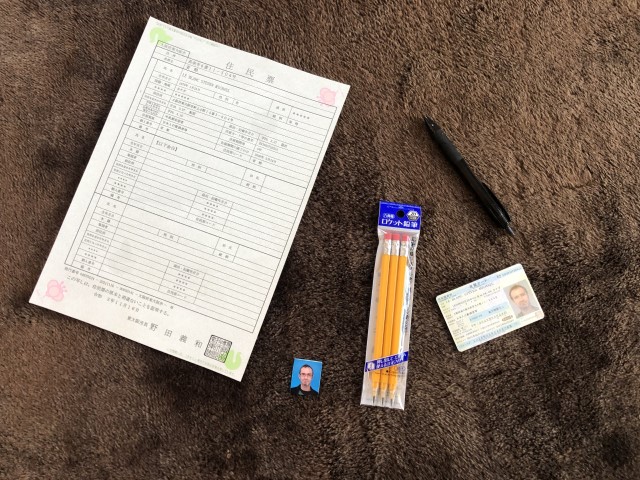
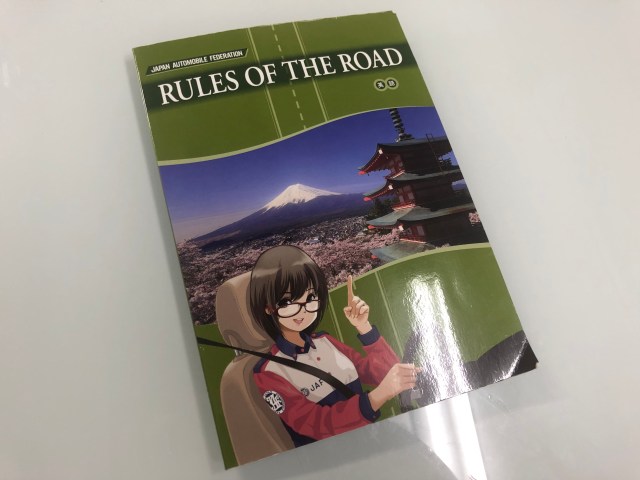
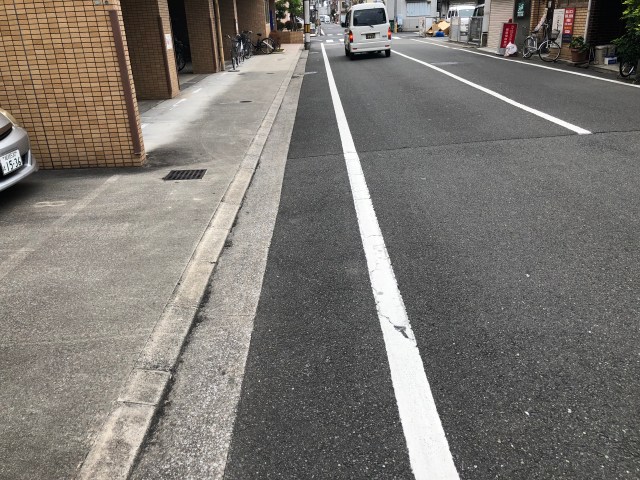
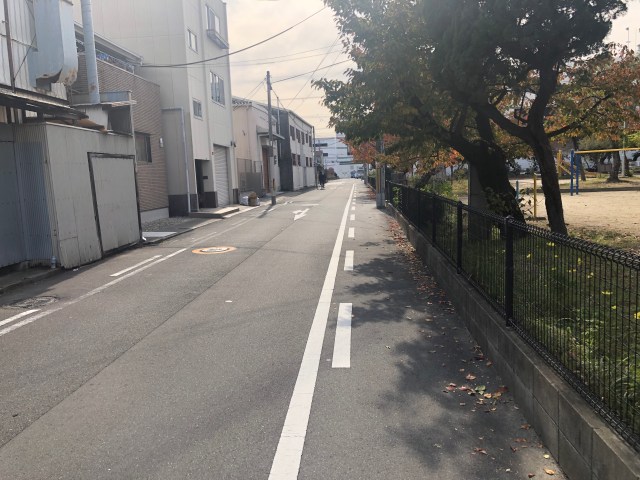
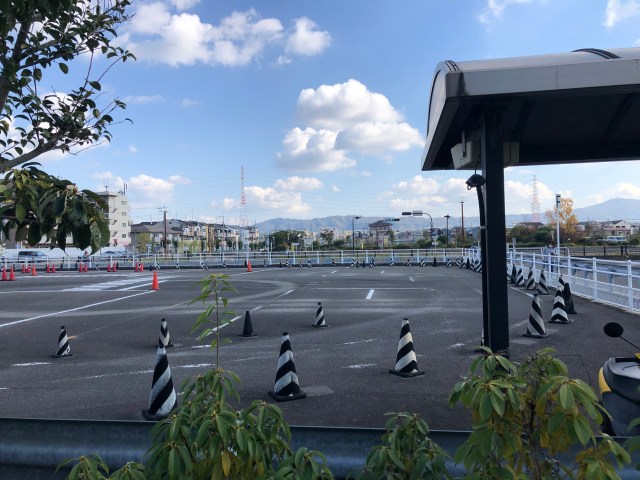
 Japanese high schooler fails driver’s license test 20 times, tries to hire someone else to take it for him
Japanese high schooler fails driver’s license test 20 times, tries to hire someone else to take it for him 69-year-old Tokyo man arrested for driving without a license for over 50 years
69-year-old Tokyo man arrested for driving without a license for over 50 years Man rides motorbike into lobby of Fukuoka police station, demands they crack down on rude driving
Man rides motorbike into lobby of Fukuoka police station, demands they crack down on rude driving Heartstopping video shows narrowly averted car crash, absurdly slow driver【Video】
Heartstopping video shows narrowly averted car crash, absurdly slow driver【Video】 People in some parts of Japan now legally allowed to smile for their driver’s license photos
People in some parts of Japan now legally allowed to smile for their driver’s license photos How to order snacks on a Shinkansen bullet train in Japan
How to order snacks on a Shinkansen bullet train in Japan New Pokémon ice cream, dessert drinks, and cool merch coming to Baskin-Robbins Japan【Pics】
New Pokémon ice cream, dessert drinks, and cool merch coming to Baskin-Robbins Japan【Pics】 Japan’s new difficult-to-drink-from beer glass protects your liver, but it’s a brutal experience
Japan’s new difficult-to-drink-from beer glass protects your liver, but it’s a brutal experience Demon Slayer: Kimetsu no Yaiba gets new roller coaster attractions and food at Universal Studios Japan
Demon Slayer: Kimetsu no Yaiba gets new roller coaster attractions and food at Universal Studios Japan Burger King Japan suddenly adds Dr. Pepper and Dr. Pepper floats to its menu nationwide
Burger King Japan suddenly adds Dr. Pepper and Dr. Pepper floats to its menu nationwide High-fashion Totoro cuddle purse is like an elegant stroll in the forest【Photos】
High-fashion Totoro cuddle purse is like an elegant stroll in the forest【Photos】 Hello, cosmetics! Clinique teams up with Hello Kitty this summer for first-time collaboration
Hello, cosmetics! Clinique teams up with Hello Kitty this summer for first-time collaboration To combat declining birth rate, Japan to begin offering “Breeding Visas” to foreigners
To combat declining birth rate, Japan to begin offering “Breeding Visas” to foreigners Russian crocodile hospitalized after woman falls on it
Russian crocodile hospitalized after woman falls on it Starbucks Japan welcomes alpacas for cute summer drinkware line【Photos】
Starbucks Japan welcomes alpacas for cute summer drinkware line【Photos】 Nintendo history you can feel – Super NES, N64, and GameCube controllers become capsule toys
Nintendo history you can feel – Super NES, N64, and GameCube controllers become capsule toys “The most Delicious Cup Noodle in history” – Japan’s French Cup Noodle wins our heart【Taste test】
“The most Delicious Cup Noodle in history” – Japan’s French Cup Noodle wins our heart【Taste test】 Starbucks releases a cute Frappuccino and Unicorn Cake…but not in Japan
Starbucks releases a cute Frappuccino and Unicorn Cake…but not in Japan Kyoto Tower mascot termination reveals dark side behind cute Japanese characters
Kyoto Tower mascot termination reveals dark side behind cute Japanese characters McDonald’s Japan’s Soft Twist Tower: A phantom ice cream only sold at select branches
McDonald’s Japan’s Soft Twist Tower: A phantom ice cream only sold at select branches Yabai Ramen: What makes this Japanese ramen so dangerous?
Yabai Ramen: What makes this Japanese ramen so dangerous? Finally! Nintendo Japan expands Switch 8-bit controller sales to everybody, Online member or not
Finally! Nintendo Japan expands Switch 8-bit controller sales to everybody, Online member or not Japanese government wants to build luxury resorts in all national parks for foreign tourists
Japanese government wants to build luxury resorts in all national parks for foreign tourists 10 things you should buy at 7-Eleven in Japan
10 things you should buy at 7-Eleven in Japan Studio Ghibli releases anime heroine cosplay dresses that are super comfy to wear
Studio Ghibli releases anime heroine cosplay dresses that are super comfy to wear Woman charged for driving suitcase without a license in Osaka
Woman charged for driving suitcase without a license in Osaka Studio Ghibli unveils My Neighbour Totoro miniature house model
Studio Ghibli unveils My Neighbour Totoro miniature house model Kyoto experiencing problems with foreign tourists not paying for bus fares, but not on purpose
Kyoto experiencing problems with foreign tourists not paying for bus fares, but not on purpose Fighting mild hunger with a Japanese soda that turns into jelly in the stomach【Taste test】
Fighting mild hunger with a Japanese soda that turns into jelly in the stomach【Taste test】 Studio Ghibli’s Howl’s Moving Castle tapestry unveiled in Japan for first time
Studio Ghibli’s Howl’s Moving Castle tapestry unveiled in Japan for first time McDonald’s new Happy Meals offer up cute and practical Sanrio lifestyle goods
McDonald’s new Happy Meals offer up cute and practical Sanrio lifestyle goods Sales of Japan’s most convenient train ticket/shopping payment cards suspended indefinitely
Sales of Japan’s most convenient train ticket/shopping payment cards suspended indefinitely Sold-out Studio Ghibli desktop humidifiers are back so Totoro can help you through the dry season
Sold-out Studio Ghibli desktop humidifiers are back so Totoro can help you through the dry season Japanese government to make first change to romanization spelling rules since the 1950s
Japanese government to make first change to romanization spelling rules since the 1950s Foreigner’s request for help in Tokyo makes us sad for the state of society
Foreigner’s request for help in Tokyo makes us sad for the state of society Ghibli founders Toshio Suzuki and Hayao Miyazaki contribute to Japanese whisky Totoro label design
Ghibli founders Toshio Suzuki and Hayao Miyazaki contribute to Japanese whisky Totoro label design Doraemon found buried at sea as scene from 1993 anime becomes real life【Photos】
Doraemon found buried at sea as scene from 1993 anime becomes real life【Photos】 Tokyo’s most famous Starbucks is closed
Tokyo’s most famous Starbucks is closed Princesses, fruits, and blacksmiths: Study reveals the 30 most unusual family names in Japan
Princesses, fruits, and blacksmiths: Study reveals the 30 most unusual family names in Japan “A dead bug” and other amusing, adorable, snarky, and downright ridiculous test responses
“A dead bug” and other amusing, adorable, snarky, and downright ridiculous test responses Twitter user exposes test-taking “geek” to the world, geek sees tweet and turns to confront him
Twitter user exposes test-taking “geek” to the world, geek sees tweet and turns to confront him Kyoto accidentally calls all old people “terrible drivers”【Why Does Engrish Happen in Japan?】
Kyoto accidentally calls all old people “terrible drivers”【Why Does Engrish Happen in Japan?】 City in Nagano offers super cheap taxi fares to seniors who give up licenses and disabled people
City in Nagano offers super cheap taxi fares to seniors who give up licenses and disabled people Saitama man sues police after getting pulled over for picking his ears while driving, wins about three bucks
Saitama man sues police after getting pulled over for picking his ears while driving, wins about three bucks Fukuoka woman drives through front of convenience store because she really needed to pee
Fukuoka woman drives through front of convenience store because she really needed to pee University of Tokyo lecturer suggests giving cars big cartoon eyes will make them safer
University of Tokyo lecturer suggests giving cars big cartoon eyes will make them safer Students in Japan get free point on entrance exam because of typo, Internet says they got off easy
Students in Japan get free point on entrance exam because of typo, Internet says they got off easy New self-driving buses testing across Japan let you pay with your face
New self-driving buses testing across Japan let you pay with your face Japanese schoolgirl takes car salesman on test drive he’ll never forget in cool Honda ad【Video】
Japanese schoolgirl takes car salesman on test drive he’ll never forget in cool Honda ad【Video】 We visited Akihabara’s PCR Test Center and here’s what you should expect
We visited Akihabara’s PCR Test Center and here’s what you should expect Meow-meow but no flush-flush? What’re these cats doing on highway rest stop toilets in Japan?
Meow-meow but no flush-flush? What’re these cats doing on highway rest stop toilets in Japan? Man kicked out of Japan’s national college entrance exam for improper mask-wearing technique
Man kicked out of Japan’s national college entrance exam for improper mask-wearing technique 10 ways in which Japanese men want to outperform their girlfriends【Survey】
10 ways in which Japanese men want to outperform their girlfriends【Survey】 The most fun I’ve had behind the wheel this year was with Toyota’s unusual vision for the future of mobility
The most fun I’ve had behind the wheel this year was with Toyota’s unusual vision for the future of mobility
Leave a Reply